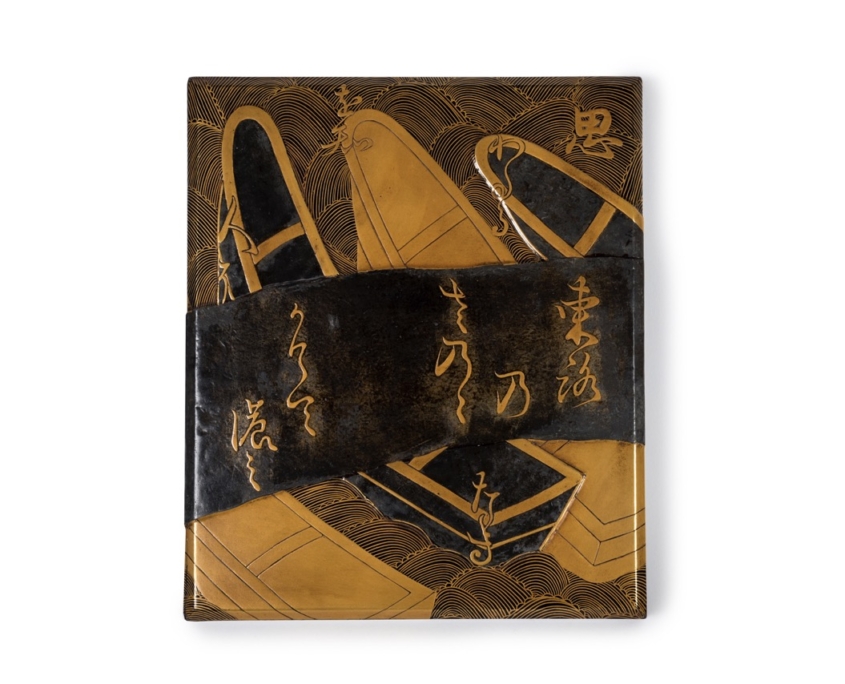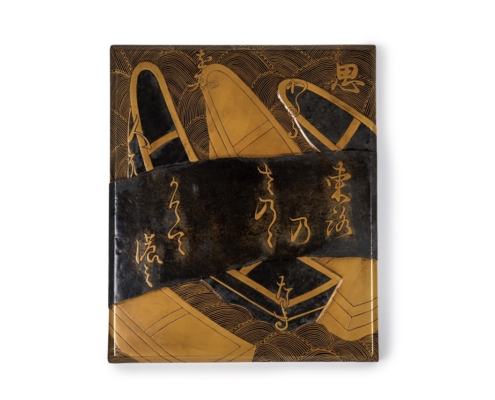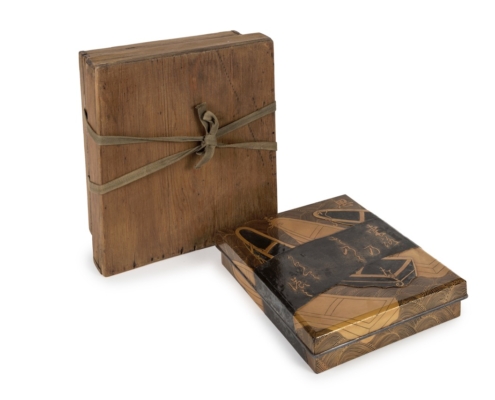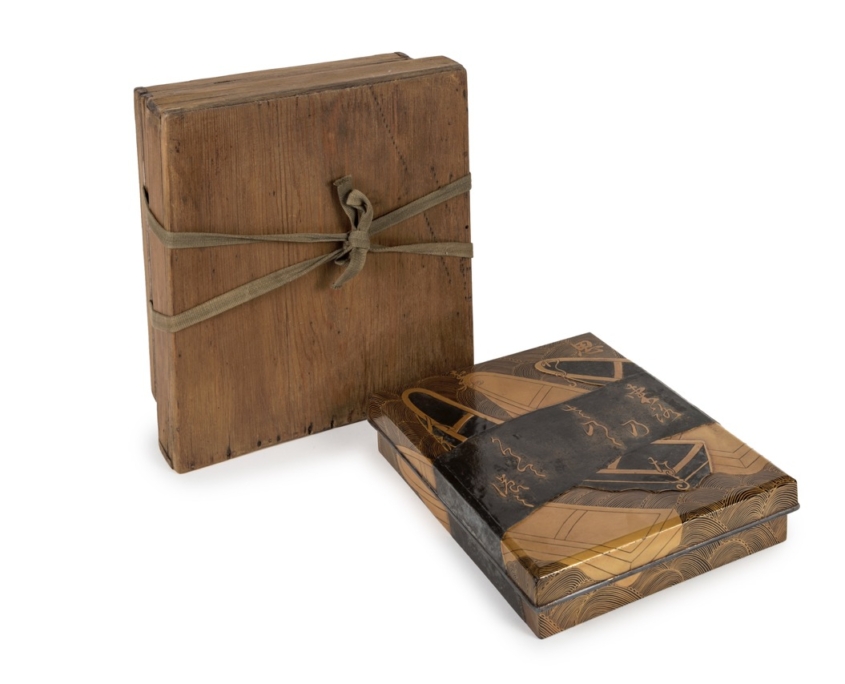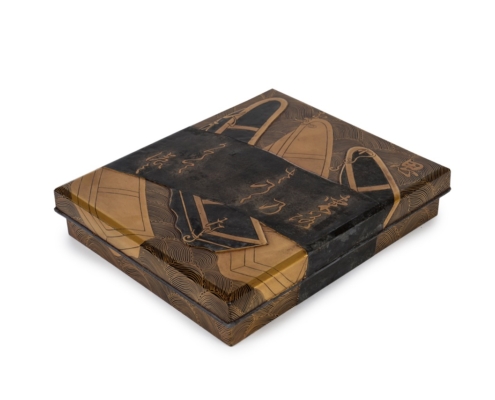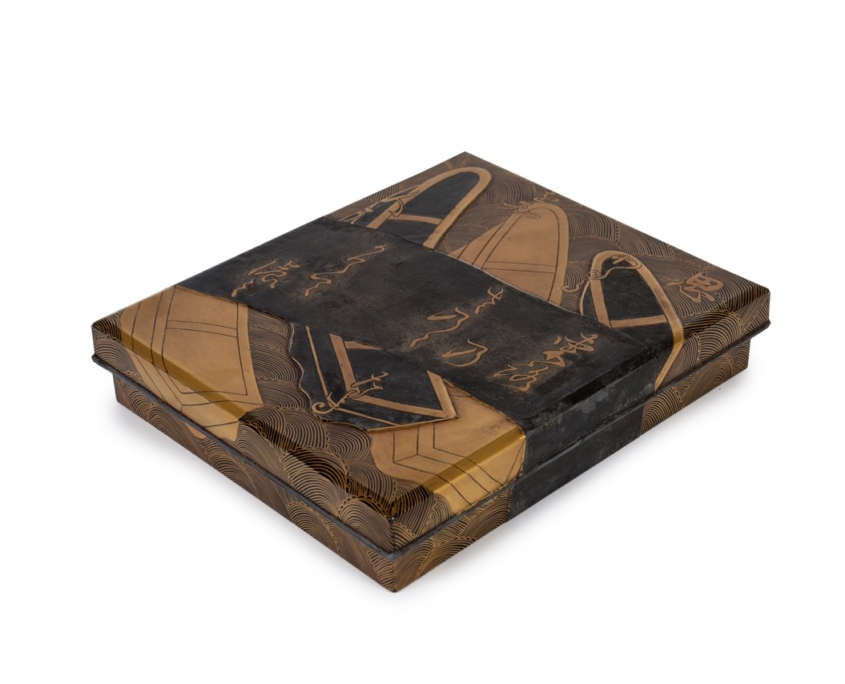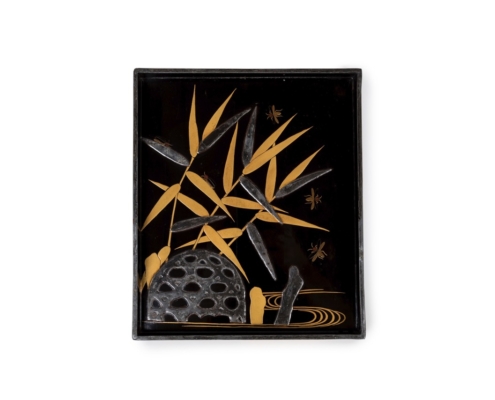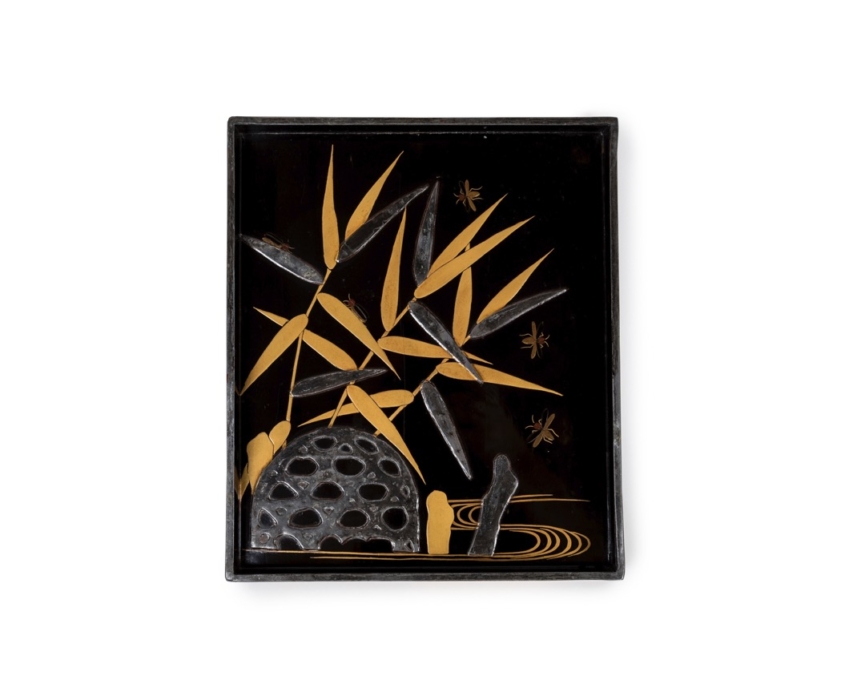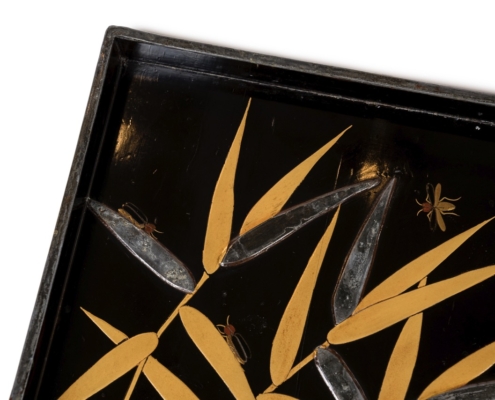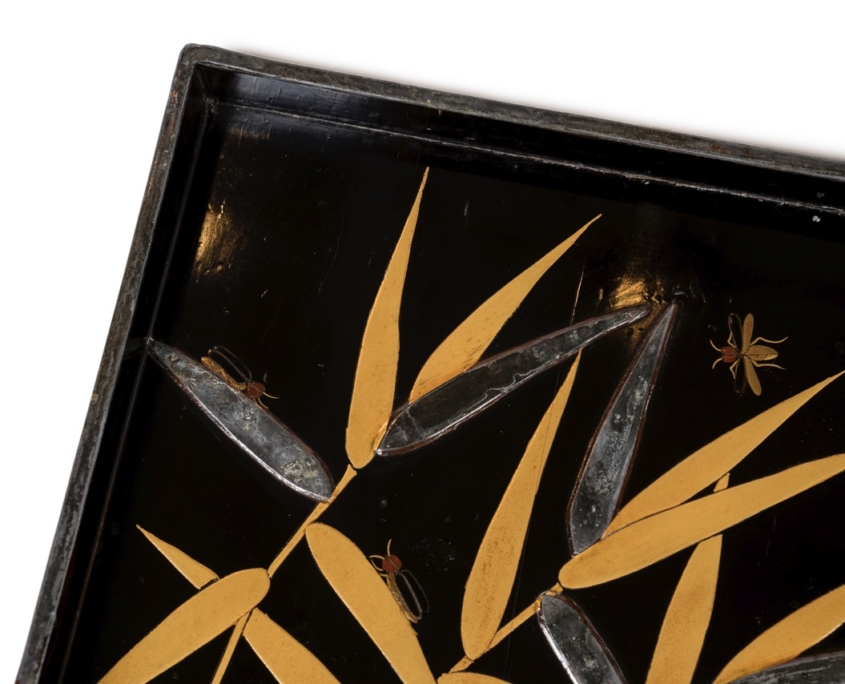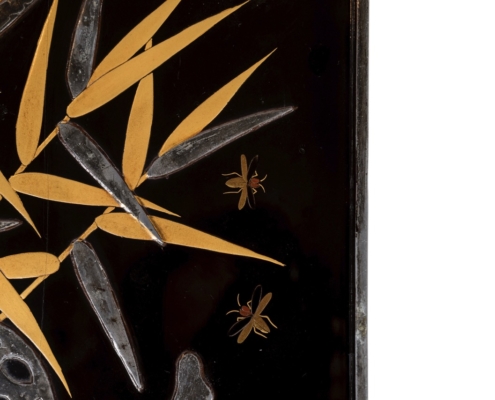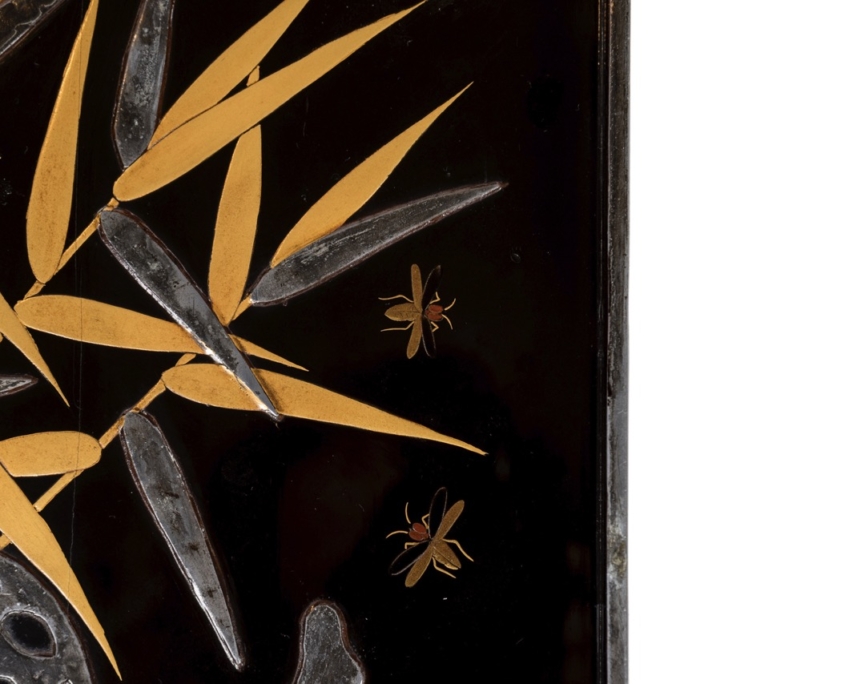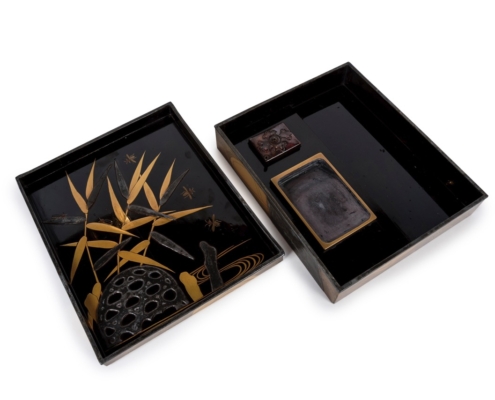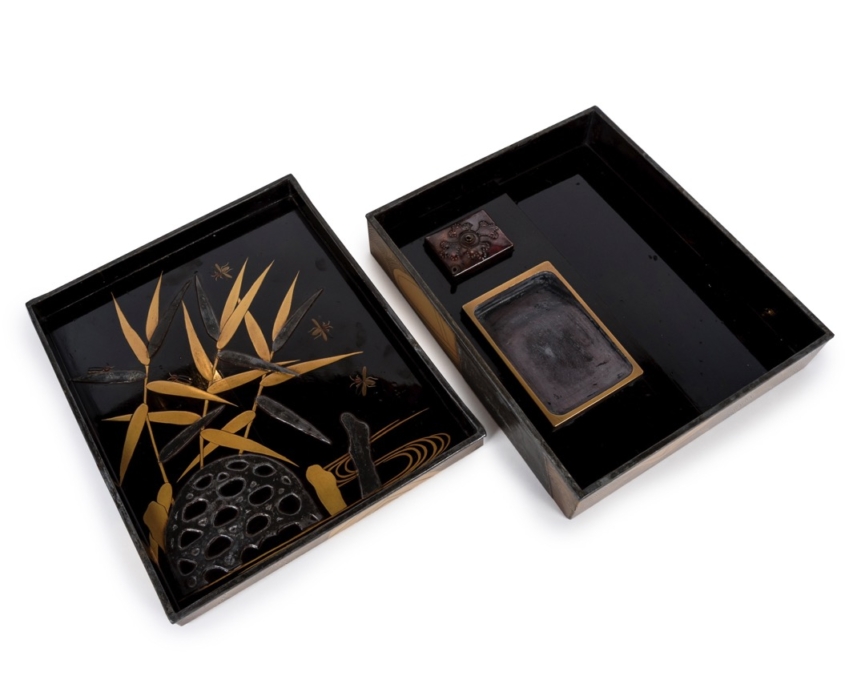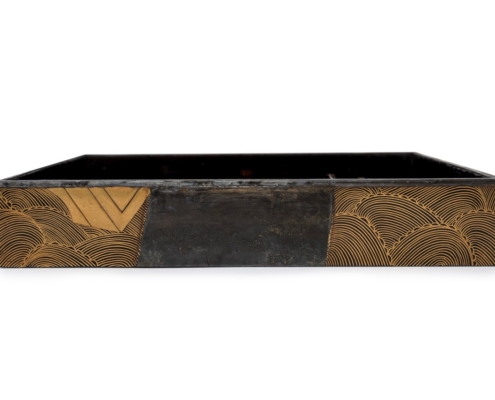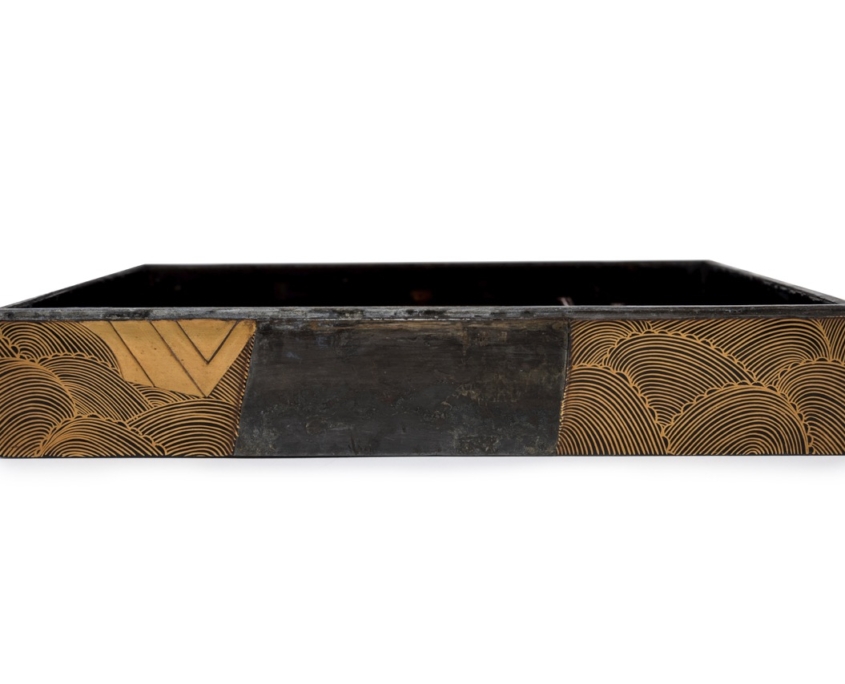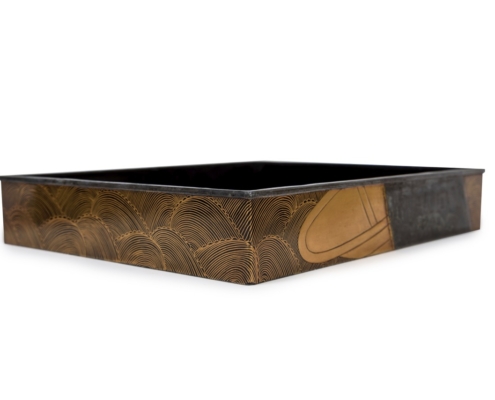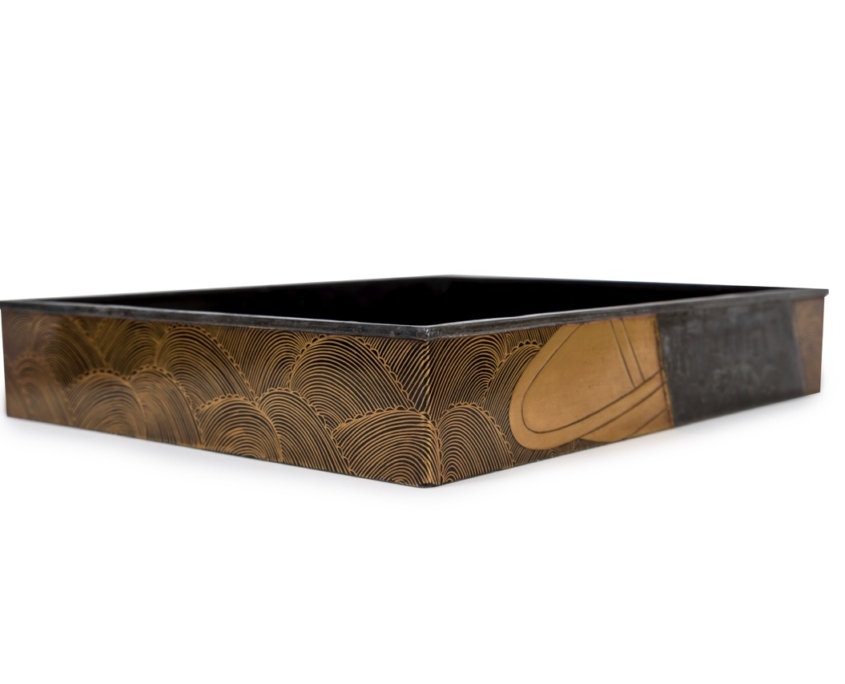The waka poem was written by Minamoto no Hitoshi (880-951). It was published in 951 in the anthology Gôsen Wakashû, at the request of Emperor Murakami in the Heian period (794-1185). The word “bridge” is omitted, the image suggesting the missing word. It could be translated as: “The long bridges between the boats in Sano on the road to the East / remind me of the love which bridges the gulf between us / but you have not noticed my love at all.” (Azumajino / Sano no (funabashi) / kaketenomi / omoiwataru o / shiruhitono naki
東路の / 佐野の(船橋) / かけてのみ / 思ひ渡るを / 知る人のなき)
Original box included. Inscribed on the lid: “Suzuribako bridge” (船橋硯箱).
Document folded in an envelope attesting to the first provenance : the writing box, made by Kôetsu, belonged to the Shimazu family.
Inscriptions :
- Cover page: « Kôetsu / Bridge / Suzuribako maki-e » (光悦 / 舟橋 / 蒔陰硯箱)
- Envelope: « Made by Kôetsu / Shimazu Ponton maki-e / suzuribako » (光悦作 / 島津 舟橋蒔陰 / 硯箱).
- Document: Shimazu Bridge / made by Kôetsu / maki-e writing set / passed on to Shimazu family / etc. (島津舟橋 / 光院作 / 蒔陰硯箱 / 島津家伝来 /…). Le reste du document détail l’acte de transmission. The rest of the document details the act of transmission.
Honami Kôetsu was a major figure in Japan. As multidisciplinary artist, he is known as a poet, calligrapher, lacquerer, ceramicist and potter.
He was born into a family of sword polishers who served the imperial court and the military leaders Tokugawa Ieyasu and Oda Nobunaga. Wishing to revive the refinement and elegance of the Heian Imperial Court (794-1185), considered as a golden age, he was inspired by the culture of that period. He became one of the greatst calligraphers of his time and is known as one of the “three paintbrushes of the Kan’ei era”, alongside Konoe Nobutada and Shôkadô Shôjô.
As lacquerer, he began to employ new techniques in the late 16th and early 17th centuries, using tin, lead, other metals as well as gold and mother-of-pearl in a thick manner to create innovative patterns. This style is known as Kôetsu maki-e. Together with Sôtatsu Tawaraya and Ogata Kôrin, Kôetsu had a considerable influence on the following generations as the founders of the Rimpa school.
His Pontoon bridge suzuribako (Funabashi), kept in the National Museum in Tokyo, was designated as a national treasure in 1967. It has the same poem and motif as our object.




